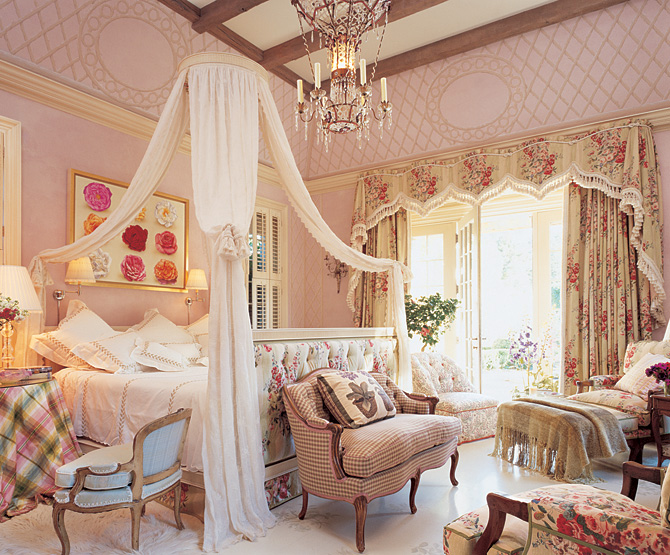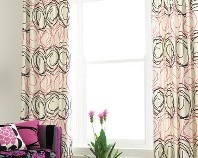Tips for Room Designing
 February 10, 2008
February 10, 2008  Irwin Weiner ASID -- I was approached in 2006 by folks putting together information for a decorator show house here in the East, and I was asked to put together the following thoughts about approaching the design of a single room in your home.
Irwin Weiner ASID -- I was approached in 2006 by folks putting together information for a decorator show house here in the East, and I was asked to put together the following thoughts about approaching the design of a single room in your home.
I hope the following steps help you as you face your decorating tasks, whether you're going solo or working with a design professional.
1. Dig Your Bones: Before designing your space, look at the shapes and planes of the room. This is often referred to as the bones of a room. Oftentimes, the more special the architecture of the space, the easier it is to decorate. You wouldn’t need much to create a beautiful room if it already had high ceilings, arched windows, tall columns, a coffered ceiling, and a wonderful view! The trick is to create a space that’s equally appealing without great architectural interest.
2. Be Moody: Decide on the mood you’d like your interior to have. Would you like it to be formal and intimidating, weird and funky, laid-back, or contemporary? Personally, I prefer an interior to be elegant, youthful, witty, and inviting. A few samples of whimsy and personal touches such as photographs and items found antiquing or flea-market shopping help add to the unique quality of an interior. In addition, adding pieces that tell a story or are inherited make any space feel more like a home.
3. Flip Your Lid: Remember that the ceiling of your room is a blank canvas. If possible, raise the ceiling, either by creating a tray into the attic or adding a prefab dome. Adding beams for a rustic look or a crown molding for a more elegant feel can go a long way to enhance your interior. I often use a door casing flat on the ceiling to give the interest of a crown molding while making the walls seem taller.

4. Hate Mold, but Love Moldings: Wall moldings are like an artist’s pencil on a page. They will enhance your space -- if done well. Parallel moldings can create a mid-century feel. Classically-shaped boxes can make a room feel traditional, dressy, and antique. Unless a room is very large or formal like a foyer, moldings should be painted the same color as the walls to maintain their subtlety. I know it’s tempting to emphasize moldings, but painting moldings a contrasting color can make them look like they’ll jump off the wall and chase you back to Home Depot!
5. Risky Business: Take risks and trust your instincts when decorating your room, but don’t buy impulsively. Select furniture that is unusual, but make sure you feel that you can live with the pieces for a long time. Purchase the most expensive pieces you can afford. Don’t forget that what’s expensive today is inexpensive tomorrow. Remember how many times we’ve regretted not buying that one chair we passed up in an antique store a few years ago because it was too pricey? Go on. Take a risk!
Avoid decorating with things that create a feeling of unease in your room, like tables with too-sharp corners, objects that look as if you’ll hit them if you talk with your hands, and chairs that appear too delicate to sit on. The goal is to live in a space that is inviting and has a sense of calm. Lay out your furniture carefully, both with an eye to making the best use of space and to facilitate the function of the room. Remember that rooms can often be used for two purposes, such as a dining room-library combination or a family room where you can watch TV, eat a meal, have the kids do homework, or gather everyone together to play games.
6. You Light Up My Life: An even spread of light without any glaring light bulbs is ideal. It’s relatively easy to have your electrical outlets wired so that they operate from a single wall switch. It's most convenient to turn all your lamps on and off from a single switch area, obviously avoiding having to go around the room and switching on individual lamps. Use soft white light bulbs rather than clear for lighting fixtures as they soften the shadows cast on walls and ceilings. And don't forget to explore the latest fluorescents and eco-friendly lighting solutions to save energy and resources. 
7. True Colors: I often select a color scheme by looking at a printed fabric first, such as a necktie or dress, a fabric sample, a pillow, a wallpaper swatch, or a photo in an interior design magazine. If I have many interesting items such as artwork, architectural elements, or a great view, I use less color in the additional decorating elements.
Color is an inexpensive way to add drama and punch to a room, especially where there is limited interest. Color is also easily changed later on. Painting walls and ceilings a strong color can add interest and personality to a room. I often paint a powder room, foyer, or dining room in strong colors as these rooms are not lived in as much as bedrooms and living rooms which usually require a more calming palette. Like food, color is a matter of taste. At the end of the day, you and your family should feel comfortable with the colors in your room.
8. A Delicate Balance: Like Black & White, Yin & Yang, and Sweet & Sour, a room should be balanced. Here are some balancing tricks I recommend:
- Add a touch of a hot color in a cool room, such as red flowers or a bright painting to counterbalance blues, grays, or beige.
- Stain a floor almost-black when using light furniture and/or a light rug.
- Incorporate comfortable and inviting furniture with formal upright seating.
- Mix your skirts with your legs! Not all the furniture should have legs -- or not all furniture should have solid bases and/or skirts. A few chairs with legs in a room with a few solid bases and/or skirted seating pieces create a pleasant mix.
- The top half of the room should be as interesting as the bottom half. Most furniture is 36 inches tall, more or less. Artwork, tall furniture pieces, and window treatments bring your eye up so that you can see the room as a whole.
Enjoy your room decorating, and good luck!
Photo Credits: Architectural Digest, Architectural Digest
 Design2Share's Irwin Weiner ASID had a children's room featured in the December 2007 issue of Architectural Digest.
Design2Share's Irwin Weiner ASID had a children's room featured in the December 2007 issue of Architectural Digest.
Go to Rooms of Their Own: Flights of Fancy to the Ultimate Hideaway, 11 Spaces Just for Children to see his contribution.













Reader Comments